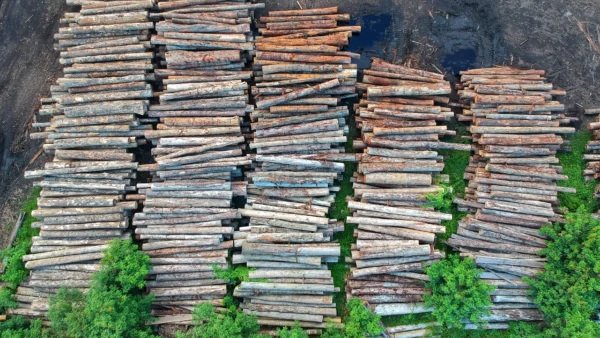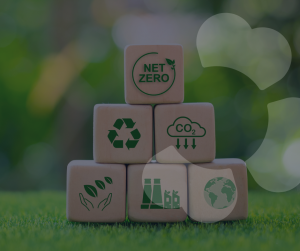There are two key driving factors to consider when building a carbon credit portfolio: maximizing the impact of your investment and minimizing your exposure to carbon credit risks. And as you learn more about the implications of additionality, leakage, and permanence, some of the key elements found in carbon offsets everywhere, you might run into a concept known as credit stacking. This Carbon Credits Explained article explores the nuances of credit stacking, and how companies can use it to better protect their climate investments.
What is carbon credit stacking?
From a buyer’s perspective, credit stacking refers to purchasing multiple short-term carbon offsets to ensure carbon dioxide is kept out of the atmosphere permanently or for 100+ years.
Purchasing multiple short-term carbon offsets helps to ensure carbon credit permanence. Permanence, a term used almost synonymously with durability in the offsetting world, is a measure of how long a metric ton of carbon will remain out of the atmosphere, and the likelihood that this duration will be adhered to.
If you purchase one metric ton of carbon to be removed, that metric ton of carbon would, ideally, never re-enter the atmosphere. However, it’s difficult to guarantee this kind of storage over the long term (think, hundreds and thousands of years).
Most carbon credits available on environmental markets don’t guarantee carbon storage over any timescale. Those that do are typically technology-based solutions, and their supply is currently limited. That’s where stacking comes in: it allows companies to purchase carbon credits that might otherwise score poorly on durability or permanence, but can still yield positive environmental benefits in the short term (>100 years) and medium term (100-1,000 years).
What’s the difference between horizontal and vertical carbon credit stacking?
There are two types of credit stacking: horizontal stacking, and vertical stacking.
Horizontal credit stacking refers to purchasing several short-term credits over time as they expire. This allows a company to permanently offset a metric ton of carbon. For example, if a credit is estimated for 25 years of permanence (after which time, the credit ‘expires’ and the carbon is released), a company would continually re-purchase a credit every 25 years. If you’re looking to neutralize your emissions, horizontally stacking credits guarantees that the metric ton of carbon is genuinely removed or avoided over time. It’s a strategy that requires ongoing monitoring and assessment of how projects are performing and making sure any reversals (such as those caused by natural disasters or project failure) are taken into account.
Vertical credit stacking refers to buying multiple short-term carbon credits upfront to offset a metric ton of carbon emitted today. In this way, a company could fully or partly negate the lifetime impact of its carbon emissions by buying more short-term carbon credits today. This would make for an immediate positive impact but could lead to more carbon being released after the credits expire. Vertical stacking also requires a bigger budget upfront, whereas horizontal stacking allows buyers to spread payments over time.
Why should buyers stack credits?
A lack of permanence or durability in their carbon offsets is one way that companies can be called out for greenwashing. For example, you might purchase a metric ton of carbon to offset a metric ton of carbon emissions from your business activities. But if the metric ton you purchased is only kept out of the atmosphere for 25 years, then all you’ve really done is delayed this metric ton of carbon from entering the atmosphere. In 25 years, your offset will mean nothing.
That’s a problem from a credibility perspective since consumers, investors, and stakeholders want to know that the carbon offsets you’re buying and the net zero or carbon neutrality claims you’re making are legitimate. Additionally, when you’re buying offsets, you want to know you’re having as much impact as possible for what you’re paying. Credit stacking ensures that your climate contributions have a lasting impact on the environment.
By stacking credits either horizontally or vertically within their portfolios, companies can better manage their risk of impermanence while also knowing that their carbon budgets are making a meaningful impact.
How should companies use credit stacking within their portfolios?
Your company’s climate commitment focuses on making a lasting impact on the environment. Credit stacking within your carbon credit portfolios is an essential strategy to help protect the permanence of your carbon climate solutions. Simply investing in one project or one type of carbon credit without assessing durability, additionality, leakage, and co-benefits in each project won’t achieve the climate impact you’re investing for.
As you build your carbon credit portfolio, we encourage you to focus on lasting impact over short-term cost and consider the durability of the credits you purchase. If your carbon credit durability goal is 100 years, then credits guaranteed for less than 100 years might not satisfy your goals. However, 100-year durable carbon credits might be outside your budget. In that case, we can stack high-quality (but less durable) carbon credits together to ensure you meet your portfolio’s permanence goal.
Building a carbon credit portfolio? Let Cloverly help.
Building a carbon credit portfolio takes time and expertise, and that’s where expert guidance can help. Cloverly helps companies build diversified, high-impact portfolios to help them reach their climate commitments. We offer vetted and verified carbon credits for purchase, and we also provide templated portfolios made up of a diversified selection of carbon credits from multiple projects and locations.
Cloverly Carbon Removals Portfolio #17
Here’s an example of a Cloverly Portfolio. This one focuses on carbon removal and comprises a combination of projects that are thoroughly vetted and proven to capture and store carbon durably.
There are four types of projects in this portfolio — biochar, wooden building elements, enhanced weathering, and blue carbon. The durability of these projects is strong; 55% guarantee storage for 1,000 years or more.






